Digging for coprolites (phosphate nodules) on Anstey Hall Farm during World War I, c. 1917-18:
Coprolite digging, deep pit and trucks. Henry Boot and Son, c. 1917-18 (Bernard O’Connor).
Hand loading coprolites into trucks. Henry Boot and Son, c. 1917-18 (Bernard O’Connor).
The eastern end of the coprolite pond, now Trumpington Meadows Country Park. Andrew Roberts, Feb 2016.
Shepherd (Ellis Matthews) and flock near Byron’s Pool stream, c. 1885, by L. Cobbett. Cambridgeshire Collection. Cambridge Central Library.
Welcome to The Changing Face of Trumpington . This is one of a series of pages showing how Trumpington has changed over time, with this page about the area to the south west of the village centre including Trumpington Meadows. The information is on display in the Clay Farm Library at The Clay Farm Centre. See the Introduction for a link to other pages.
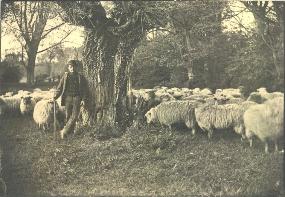
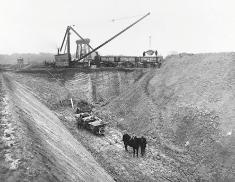
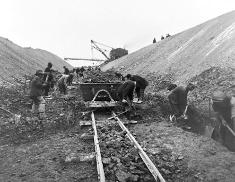
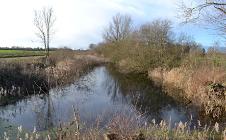
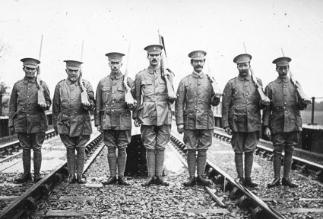
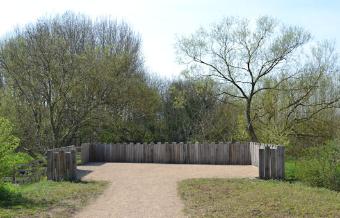
Cambridge-Bedford railway line across Anstey Hall Farm:
Trumpington Volunteer Training Corps (VTC) guarding the railway at the river bridge. Percy Robinson, 1915.
The end of the railway embankment at the site of the bridge, in Trumpington Meadows Country Park. Andrew Roberts, Apr 2015.
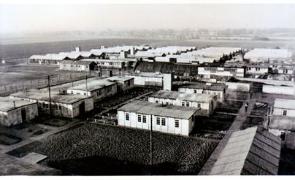

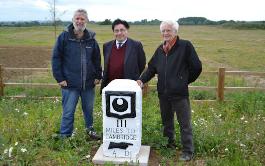
World War II Prisoner of War Camp, near the milestone at the Hauxton Road/Addenbrooke’s Road junction:
The Prisoner of War Camp, Hauxton Road, Trumpington. Looking west from one of the camp buildings off Hauxton Road. Donated by the widow of one of the prisoners, Armin Renner of Chemnitz, Saxony, who was the Secretary of Colonel Stambrook, the camp interpreter. Brother Herbert Kaden (Hiltrud Hall), late 1940s.
Camp pass giving permission for Giovanni Gemma, number 252501, to be absent from Trumpington Prisoner of War Camp, after duty until 10 pm, 10 September 1944. R. Morelli, 2010.
Howard Slatter, Professor Sir Roy Calne and Ken Fletcher at the unveiling of the third Trinity Hall milestone after renovation. Andrew Roberts, May 2011.
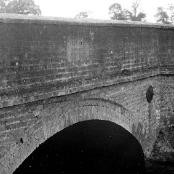
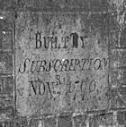
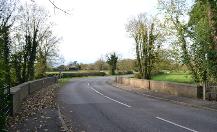
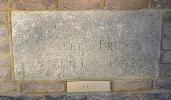
Brasley Bridge, road bridge from Trumpington to Grantchester:
The old bridge, “Brazel” Bridge (built 1790), with plaque. Percy Robinson, 1920s.
The new bridge (built 1952) before rebuilding. Andrew Roberts, Nov 2014.
Updated plaque after the rebuilding of the bridge (in 2015). Andrew Roberts, Dec 2017.
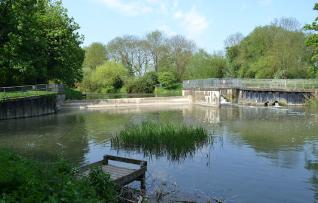
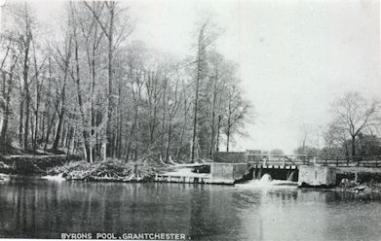
Byron’s Pool, named in honour of Lord Byron who is thought to have swum here:
Byron’s Pool and weir, R.E. Ruh, Grantchester, c. 1934. Cambridgeshire Collection. Cambridge Central Library.
Byron’s Pool, below the current weir (rebuilt c. 1949). Andrew Roberts, May 2016.
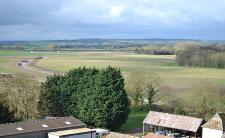
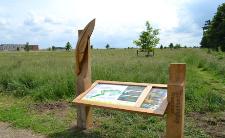
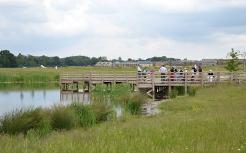
Trumpington Meadows Country Park:
Looking from Trumpington church tower south west over the outbuildings of Anstey Hall Farm, with Trumpington Meadows park, Byron’s Pool to the right. Andrew Roberts, Apr 2012.
Trumpington Meadows Country Park Discovery Day: information panel. Andrew Roberts, Jun 2016.
Trumpington Meadows Country Park Discovery Day: guided walk on the pier at the pond. Andrew Roberts, Jun 2016.

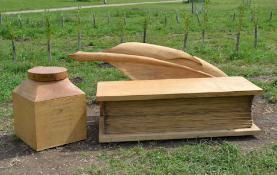
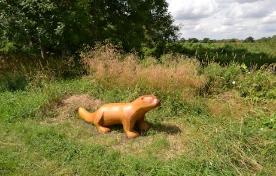
Wood carvings by Patrick Brown, woodwright, in Trumpington Meadows Country Park:
Wildlife column and writing group commemorating Lord Byron near Byron’s Pool car park. Andrew Roberts, Jun 2016.
Wood carving of an otter near the river at the western end of the park. Andrew Roberts, Jul 2016.
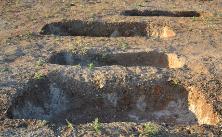
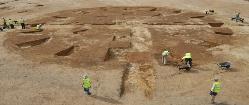
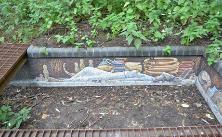
Archaeological evidence from Trumpington Meadows:
Archaeological work underway on one of the Neolithic monuments excavated near the Park & Ride site. Cambridge Archaeological Unit, 2010.
Four Anglo-Saxon burial pits, including one where the bed burial was found, near the Church. Andrew Roberts, May 2011.
Mosaic designed by Katherine Clarke (MUF Architecture/Art) commemorating the bed burial, near the river, Trumpington Meadows Country Park. Andrew Roberts, Jul 2016.
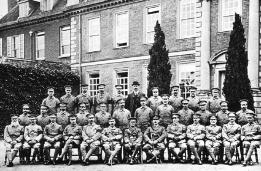
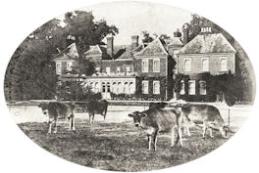
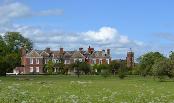
Anstey Hall:
Trumpington Volunteer Training Corps at Anstey Hall, photograph by Stearn, Cambridge. Percy Robinson, Nov 1915.
The south façade of the Hall. Percy Robinson, 1920s.
Anstey Hall from Old Mills Road, Trumpington Meadows development. Andrew Roberts, May 2014.
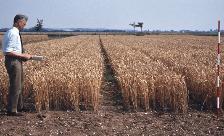
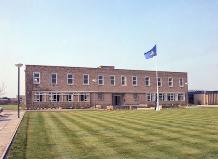

Plant Breeding Institute (PBI):
Dr Francis Lupton with semi-dwarf wheats, Plant Breeding Institute, Trumpington. John Innes Archive, John Innes Foundation.
The front entrance to the Plant Breeding Institute headquarters building in Trumpington, Cambridge. John Innes Archive, John Innes Foundation (Dr Stephen Brown).
Demolition of the headquarters building of the former Plant Breeding Institute. Dr Stephen Brown, Mar 2009.
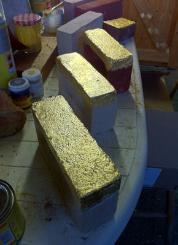
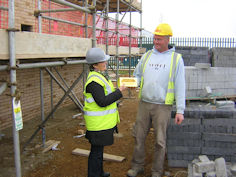
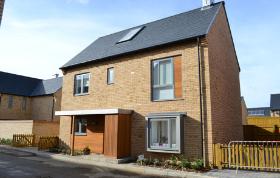
Golden bricks marking the footprint of PBI buildings within the Trumpington Meadows development:
A group of golden bricks in the studio. Caroline Wright, Feb 2012.
Preparing to place one of the golden bricks on a Trumpington Meadows home, marking the layout of the PBI site, with Caroline Wright. Nick Milne, Apr 2012.
One of the golden bricks showing the layout of the earlier PBI buildings, Forty Acre Road, Trumpington Meadows. Andrew Roberts, Oct 2012.
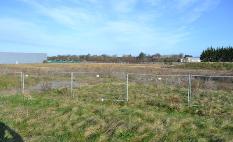
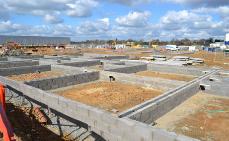
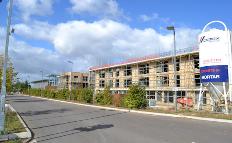
Between Hauxton Road and the John Lewis building, Trumpington Meadows development:
Looking from the Park & Ride site across the Trumpington Meadows ‘brownfield’ site prior to development, with the Church, Anstey Hall and Waitrose visible in the distance. Andrew Roberts, Feb 2011.
Foundations for apartments near the Park & Ride site. Andrew Roberts, Mar 2012.
Construction work, Spring Drive, Trumpington Meadows. Andrew Roberts, Sep 2012.
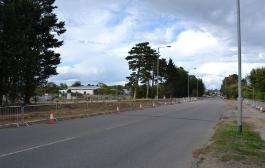
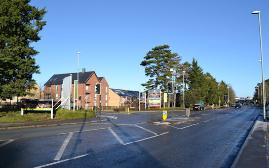
Hauxton Road/Consort Avenue junction:
Work on the Hauxton Road junction of the Trumpington Meadows spine road. Andrew Roberts, Sep 2011.
Hauxton Road and Consort Avenue. Andrew Roberts, Dec 2017.
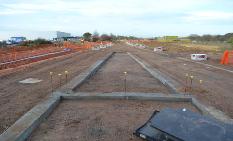
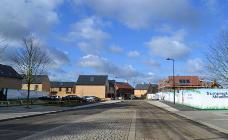
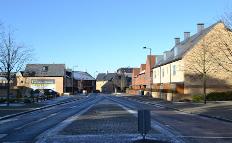
Consort Avenue:
Construction work on the Trumpington Meadows access road from the Hauxton Road junction, with the John Lewis building to the left. Andrew Roberts, Nov 2011.
Consort Avenue from Hauxton Road, with homes being built. Andrew Roberts, Feb 2013.
Consort Avenue from Hauxton Road. Andrew Roberts, Dec 2017.